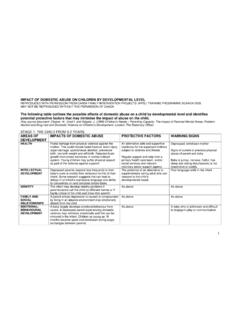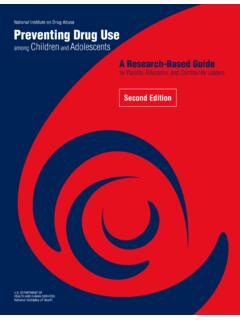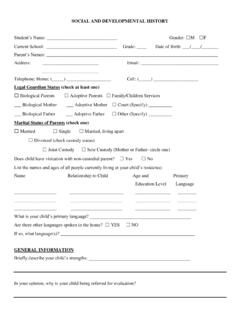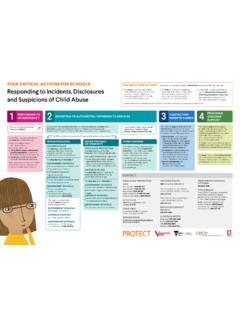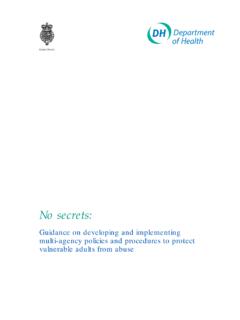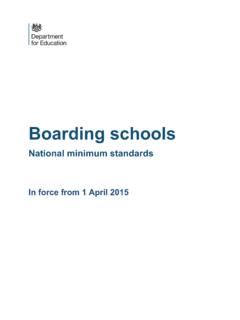Transcription of Safety Planning with Children and Youth Domestic Abuse
1 2021 Safety Planning with Children and Youth Domestic Abuse Contents: My Safety plan template (for older Children ) My Safety plan template for younger Children Guidance: developing a Safety plan with Children Other free Domestic Abuse resources for Children and young people Appendix: Print out - sample scripts for Safety Planning with Children and Youth I am a special person and deserve to be safe. Domestic Abuse is dangerous and against the law. It is not my fault that grown-ups in my house are fighting/arguing. No one should ask me to keep secrets that makes me feel bad. MY Safety PLAN My name .. If there is any fighting, loud noises or arguing in my house, I WILL: /:: / (;) CODE WORD 2021 (/) ,(/) Push the buttons.
2 On the phone for emergency services. The people who answer will say, Which emergency service do you require? You say: Police You say: My name is .. You tell the problem: I need help. Send the police. Someone is hurting You say: I am calling (give complete address) /? /,,,:: ,(/) MY Safety PLAN (younger Children ) My name .. If there is any fighting, loud noises or arguing in my house, I WILL: / ()(),(/)/?,,,:: GUIDANCE: DEVELOPING A Safety PLAN WITH Children (Reproduced from Safety Planning with Children and Youth : A Toolkit for Working with Children and Youth Exposed to Domestic Violence, Ministry of Justice.) When developing a Safety plan with Children / Youth , incorporate the following points into their Safety plan: The core Safety Planning points for Children and Youth outlined above are adapted from Safety plans found in research literature and from field practice in British Columbia.
3 There is not a one size fits all Safety plan. Each Safety plan should be unique and specific to the child/ Youth you are working with. In the following sections, sample scripts are provided as examples of wording that can be used when Safety Planning with Children / Youth . You will need to adapt these scripts to be developmentally appropriate depending on the age and developmental level of the child and Youth you are working with. 1 GO TO A SAFE PLACE 2 DON T GET IN THE MIDDLE 3 CALL FOR HELP 4 YOU ARE NOT ALONE 5 YOU ARE NOT TO BLAME 6 Domestic VIOLENCE IS DANGEROUS AND AGAINST THE LAW PRACTICE TIP: You can start the discussion of Safety Planning points wherever it seems most comfortable and useful for the child/ Youth .
4 Some practitioners suggest that starting the discussion about a safe place/ supports/who can help, can be a good way to initially address the topic. Use books, DVD s, photographs, and drawings, as appropriate. CORE POINTS TO COVER DURING Safety Planning : Talk to the child/ Youth about finding a safe place to go while the fighting is happening. For younger Children this could be anywhere where the fighting is not going on. (As Fighting is how Children / Youth often describe Domestic violence, this toolkit will also use this term.) Encourage them to do something that distracts or comforts them. Sometimes older Children or Youth may want to leave the home while the fighting is going on. Talk with them about safe places to go.
5 I. Who does the child/ Youth have in their support network and how do they access them? Depending on developmental level, have the child/ Youth : Identify people in their life they feel safe with. Draw a map or plan of their home. Brainstorm where they can go and what they can do if they don t feel safe when the fighting happens. For example, what about neigh- bours? Does the child/ Youth know them? Are they safe? Would they help? If the child/ Youth lives far from town or other people, how do they get to a safe place outside the house? Plan with them how to care for or hide special belongings (pet, sentimental things) if they have to leave home in a hurry. ii. Help the child/ Youth identify what a safe place looks like both inside and outside the house.
6 If it is safe and appropriate, you could visit the child/ Youth s home and do a walk through. Alternatively, ask the mother/caregiver to walk through the house with the child/ Youth and point out the safe places. SAMPLE SCRIPT TO COVER IN YOUR CONVERSATION WITH A CHILD/ Youth ABOUT FINDING A SAFE PLACE: a) Figure out ahead of time a safe place you can go to inside your home when there is fighting, arguing, and/or loud voices that make you feel scared or worried. A safe place in your home is anywhere where the fighting, loud noises and arguing are Go to a safe place PRACTICE TIP: Many Children / Youth have cell phones. If the child / Youth has one, be sure to include using their cell phone in their Safety plan, keeping it with them in and out of the house.
7 Not happening. Going to your safe place does not mean that you have to hide. It just means getting away from the fighting. Stay there until the fighting stops. If there is a lock on the door of a room, this might be good place to choose because you can lock the door. b) While keeping yourself out of the way of the fighting, you might want to do something that makes you feel better, like: Listen to music. Watch television. Write, draw pictures, or play a video game. Be with any of your brothers/sisters and talk or play a game together. Remember to give yourself positive messages and use techniques you have learned to help keep yourself calm such as breathing techniques (take a deep breath and count to 10) and going to a space/room that makes you feel calmer.
8 Call the Kids Help Phone at .. (add the phone number) and talk to someone if it is safe to do so. c) If you think you might be safer outside of your home during the fighting, think ahead of time about some safe place(s) to go to. Talk with your mother/ caregiver about where that safe place will be so you can meet up together after the fighting, when it is safer. Figure out how you will get there: Walk Ride your bike Take a bus Call someone for a ride Call a taxi d) Try to keep some money in your pocket, purse, or room, for things like making a call from a public pay phone if there is one, or buying a bus ticket. Talk with the child/ Youth about how getting in the middle of the fighting could be dangerous for them.
9 Affirm with the child/ Youth that they may feel conflicted about the fighting and may want to stop the Don t get in the middle fighting themselves. Tell the child/ Youth that it is safer for them, and their mother/caregiver, if they do not get involved. If they need or want to stay close by, advise the child/ Youth to stay out of sight, and if possible, to have a phone nearby. Talk about what the child/ Youth needs to do before, during, and after the fighting so that they don t get in the middle. Remind the child/ Youth that the best way for them to help is to keep him or herself safe and/or get another adult that can help. SAMPLE SCRIPT TO COVER IN YOUR CONVERSATION WITH A CHILD/ Youth ABOUT NOT GETTING IN THE MIDDLE: Don t get in the middle (of the fighting, arguing, loud voices).
10 Sometimes when adults are fighting, arguing, or using loud voices, some kids want to help, such as by staying in the room, or yelling to stop the fighting. But it is safer for you, and for your mother, if you do not get involved in trying to stop the fighting. If you feel like you need to stay close by, then stay out of sight and as far away as possible, and try to have a phone nearby. Discuss with the child/ Youth how to get help. Review the specific steps to follow when talking with emergency services, and discuss naming a code word for the mother/caregiver to use to indicate the child/ Youth needs to call 911 or 999 (depending on the country). It is important to remember that not all communities use 911 or 999 (depending on the country) for emergencies and rural areas often don t have street names and addresses.
